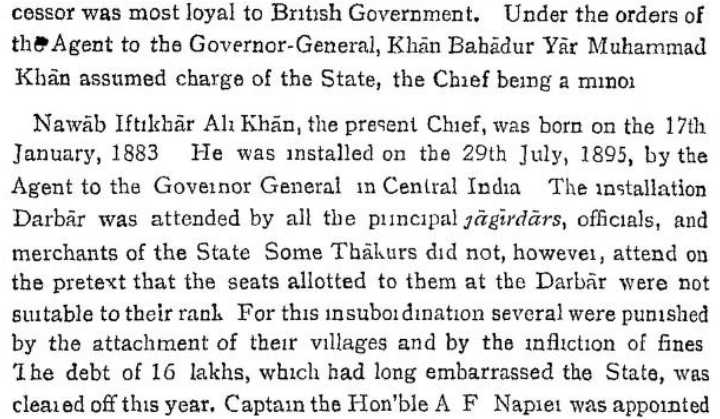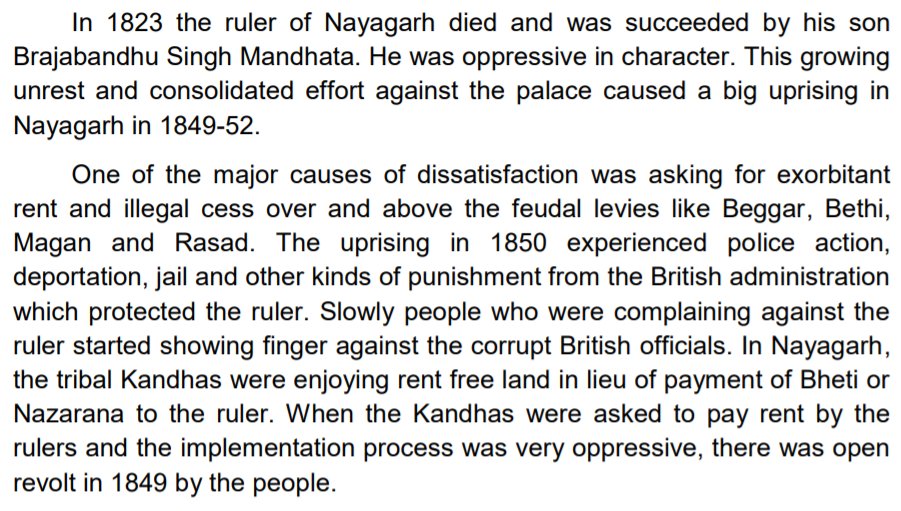See. Another state, same story. The British increase the taxes drastically and it's the king of Nilagiri who takes the beating because of that. 

Let me try to make this a thread. Whenever I come across my old stuff, I will plug it here.
Vishwanath Shahdeo, the Zamindar of Barkagarh joined the War of Independence in 1857 because the missionaries converted tribals and instigated them to forcibly take over his lands.
Vishwanath Shahdeo, the Zamindar of Barkagarh joined the War of Independence in 1857 because the missionaries converted tribals and instigated them to forcibly take over his lands.

The role of land settlement in fomenting unrest. Did this alienation between the ruler and the ruled paved way for missionary activity?
https://twitter.com/cbkwgl/status/1449759668188823558
Guess Keonjhar needs to be looked more closely - not just Keonjhar but every kingdom where there was a regency. 

On Ravenshaw of Ravenshaw College fame. Guess the college should be named Ratna Naik College or Rani Bishnupriya College? 

How consistently the British used the minority of kings to increase their profits!! Bamra this time. 



Never attribute to malice that which is adequately explained by stupidity - Hanlon's Razor
On Sambalpur Fort
On Sambalpur Fort

Well, Ravenshaw doesn't turn out to be as great as he is projected to be...he was the one who presided over the 1866 famine which forced the British not to plan for a repeat. 

Jaora this time. King sacked a minister, the British retaliated by imposing an advisory council on him and the advices the council gave, the kingdom soon slipped into arrears and had to go for loans!! 

And how do you clear off the debts? Insult Talukdars, get offended by the offended Talukdars and impose fines on them. 

We are happy to allow the king to do whatever he wants till he doesn't cross the line. What are the lines? 

• • •
Missing some Tweet in this thread? You can try to
force a refresh

















